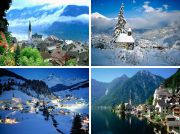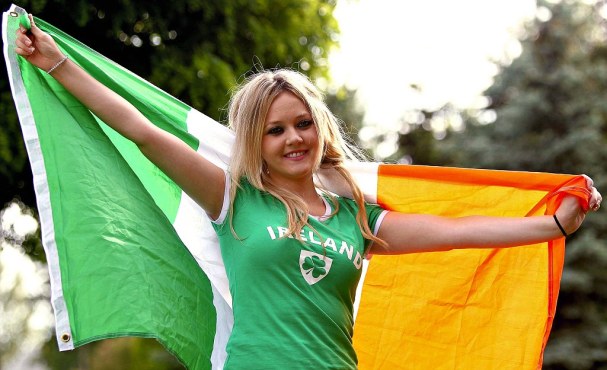Venice Carnival
 Venice Carnival (Carnevale di Venezia) is an annual festival held in Venice in February. The carnival begins about two weeks before the Ash Wednesday (in the Latin rite of the Catholic Church – the day of the beginning of Lent, celebrated 45 calendar days before Easter; in Orthodoxy it corresponds to a clean Monday) and ends on Fat Tuesday (a carnival holiday is celebrated in the Catholic world on the eve of Ash Wednesday).The 18th century was the era of the highest prosperity in the history of the Venetian carnival in history. The irrepressible spirit of flirting and betrayal, a feeling of complete freedom and the expectation of exciting adventures attracted an aristocracy from all over Europe to this masquerade. The fame and popularity of the carnival was so high that even high-ranking persons did not consider it incapable of incognito to take part in unlimited fun. In the days of the carnival, everything was subject to the Venetian mask. Masked not only had fun, but also went to the service and shopping, to theaters and dates. The mask abolished all norms of behavior, and in the carnival days and nights, when the Catholic Church bashfully looked away from the Venetian streets, not to commit the fall under its cover was considered a bad form. Even the convents in those days turned into dance halls and were filled with masked men. Judging by historical notes, the Venetian nuns of those times curled, wore low-necked dresses that did not cover slender legs, and covered their breasts only when they sang in a church choir. Almost everyone had a lover whom she secretly met. And if such were the morals of the nuns, then one can imagine what the rest of the carnival participants did during the festivities. Choking with unrestrained fun, the Venetians tried to win happiness and love, with a generous hand, releasing the remnants of material well-being created over the past centuries.
Venice Carnival (Carnevale di Venezia) is an annual festival held in Venice in February. The carnival begins about two weeks before the Ash Wednesday (in the Latin rite of the Catholic Church – the day of the beginning of Lent, celebrated 45 calendar days before Easter; in Orthodoxy it corresponds to a clean Monday) and ends on Fat Tuesday (a carnival holiday is celebrated in the Catholic world on the eve of Ash Wednesday).The 18th century was the era of the highest prosperity in the history of the Venetian carnival in history. The irrepressible spirit of flirting and betrayal, a feeling of complete freedom and the expectation of exciting adventures attracted an aristocracy from all over Europe to this masquerade. The fame and popularity of the carnival was so high that even high-ranking persons did not consider it incapable of incognito to take part in unlimited fun. In the days of the carnival, everything was subject to the Venetian mask. Masked not only had fun, but also went to the service and shopping, to theaters and dates. The mask abolished all norms of behavior, and in the carnival days and nights, when the Catholic Church bashfully looked away from the Venetian streets, not to commit the fall under its cover was considered a bad form. Even the convents in those days turned into dance halls and were filled with masked men. Judging by historical notes, the Venetian nuns of those times curled, wore low-necked dresses that did not cover slender legs, and covered their breasts only when they sang in a church choir. Almost everyone had a lover whom she secretly met. And if such were the morals of the nuns, then one can imagine what the rest of the carnival participants did during the festivities. Choking with unrestrained fun, the Venetians tried to win happiness and love, with a generous hand, releasing the remnants of material well-being created over the past centuries.
It is already established that in the heyday always comes decline. And even the Venetian carnival could not avoid this bitter fate. In 1797, French troops occupied Italy, and Napoleon’s decree prohibited Venetian carnivals. But Venice could not and did not want to say goodbye to the holiday, which for several centuries was the soul of the city. Oddly enough, the beginning of its revival was laid by a banal commercial calculation. After the Second World War, Venice became one of the main tourist centers of Europe. Many new hotels, cafes and restaurants opened in the city, but it soon became clear that they had been idle almost all winter. And in the late 70s the idea arose to revive the legendary carnival. In 1980, a dove fluttered again in the sky above St. Mark’s Square.
Since then, every year at the very end of winter, Venice is again filled with a wave of visitors, which are several times larger than the Venetians themselves. The cheerful and reckless spirit of the carnival, languishing for almost two centuries in oblivion, once at large, again quickly gained its lost glory.
The carnival lasts ten days and opens with the medieval festival of Festa delle Marie, dedicated to the liberation of the beautiful Venetians. The procession runs from the palace of San Pietro to Piazza San Marco, where the audience will see seven of the most beautiful and young residents of the city – seven Mari. In addition to traditional entertainments, an integral part of the Venetian carnival is a football match, which usually takes place on the fifth day of fun. The Venetians are confident that this sport was born in their city, and arrange a real reconstruction of medieval football on the days of the holiday. The carnival ends with the burning of a scarecrow and general dancing in Piazza San Marco. The next day, the city falls asleep in order to explode again for ten days in a fountain of fun and whirl its guests in a turbulent stream of carnival.
Today, the carnival is a purely “tourist” phenomenon, which has lost its former significance for the spiritual life of the Italian people. It is believed that the city is slowly dying, gradually plunging into the waters of the Adriatic. Therefore, the fun reigning every year at the Venetian carnivals almost looks like a feast during the plague. But on the other hand, this colorful, heady sight can also be considered as a sign that Venice is still alive and follows its centuries-old traditions. In the days of the Venetian carnivals, Venice resembles the former great city: thousands of thirsty connoisseurs of this vibrant action come here from all over the globe. The city dresses in festive dresses, disguising its antiquity. And I hope that the Venice Carnival will regain its former glory.




